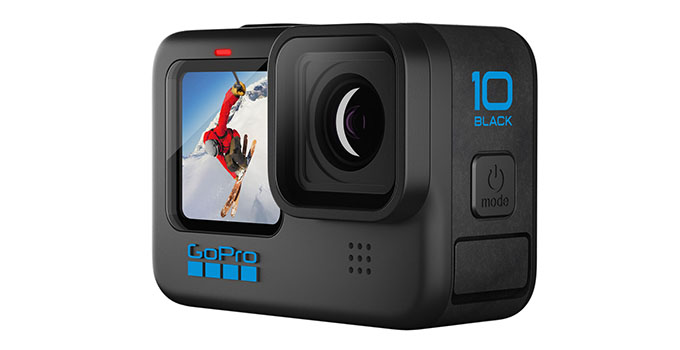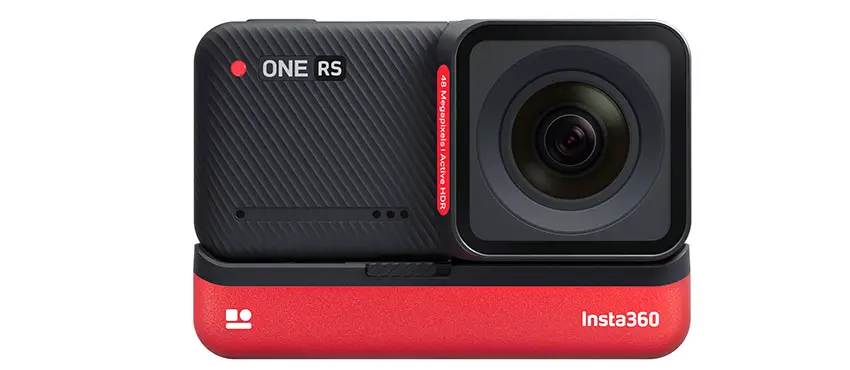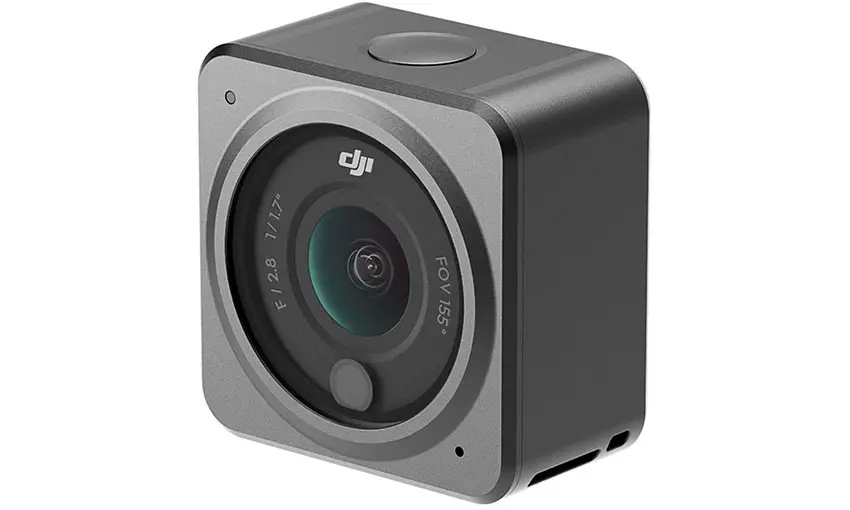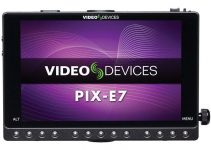No longer is the only choice in action cameras the GoPro. With DJI and Insta360 in the market with unique offerings you might have a long debate over exactly which model might be the best overall or the best for you. Right now we are looking at three main offerings: the GoPro HERO10 Black, the Insta360 ONE RS, and the DJI Action 2. Each has its own unique feature set or design.
The Hybrid Shooter has put together a comprehensive comparison of these three cameras with some deep dives into things like image quality and stabilization. It should help you make a decision in your camera search.
Construction & Design
No surprises that GoPro still maintains the classic action cam form factor that they pushed to the forefront of the category. The HERO10 still echos the design of some of the earliest GoPros with a newer, cleaner take.
Insta360 opted for similar looks but with a modular design. The ONE RS consists of three pieces: the core, battery base, and camera module.
DJI is another modular pick but in a different, more simple way. It can operate as an ultra-compact camera on its own, but a couple magnetic attachments can add functionality and battery life.

Image Credit: GoPro
GoPro’s design is simpler and allows for larger screens. Plus, the solid design is likely a bit more durable. Insta360 can’t take advantage of a single larger body but does allow users to fine tune the camera’s feature set a lot more. DJI is a bit odd, but its core camera is extremely tiny which is itself an advantage. Add the display module for a front screen and longer battery.
For waterproofing, both the GoPro and DJI models beat out Insta360. The modularity there is limiting the ONE RS and it will ask for the use of a housing to get best waterproofing specs.
Mounting is won by GoPro as it has the integrated action cam mount. DJI uses its own magnetic system which is neat if you go for it. Insta360 is either going to need the boosted battery pack or a housing to get the mount.
Image Quality
DJI went with the widest perspective and the standard mode with dewarping is very good. The GoPro HERO10 is a bit more cropped in but very versatile. Insta360 can opt for the 1” mode which will split the difference between the DJI and GoPro. The 4K Boost mode is equivalent to the HERO10. Plus, the ONE RS can use a 360-degree mod which neither of the others can get.
Image sensor size has become a big topic in the past few years. GoPro is using the smallest at 1/2.3” with 20MP resolution. The ONE RS with Boost Mod has a 1/2” 48MP sensor. The DJI Action 2 has a 1/1.7” sensor with 12MP resolution. However, the ONE RS can work with a 1” 20MP sensor.

Image Credit: Insta360
This translates into different image quality results. All are very good to be fair. The 1” Mod on the ONE RS does take the win as it will produce the sharpest and cleanest results. The 4K Boost Mod does produce some artifacts. DJI and GoPro offer slightly different images but both are good and most people will be plenty happy.
Where the DJI’s sensor will start to falter is when you start to use any zoom or crop functions. The lower resolution of the Action 2 will show and zoomed images will be noticeable softer.
In low light it is a fairly straightforward test. The 1” Mod ONE RS is the best with the 4K Boost Mod following it. Behind Insta360 is DJI with the Action 2 and then the GoPro in last. These aren’t particularly surprising.
The Action 2 and HERO10 can both shoot 4K up to 120p. The ONE RS will only do 4K up to 60p.
For stills all will deliver respectable results with support for raw format capture.
Stabilization
All these brands seemed to have figured out stabilization at this point. All three produce incredibly smooth results in all situations. Where they might struggle a little bit is in extremely low light.
Something that might be appealing to some is Insta360’s software package. This offers post stabilization with a fair bit more control (and theoretically better performance since it doesn’t require real-time processing). It does balance out a weird shortcoming of the Insta360 which is that the screen has a noticeable lag when using stabilization in-camera. The HERO10 and Action 2 don’t have this issue at all.
Screens
GoPro wins out when it comes to the built-in screens. The rear has the largest at 2.3” and even the front has a 1.4” screen. Both look great and are very functional. The Action 2 has a smaller 1.8” screen but it is very sharp and OLED gives it great contrast. Picking up the dual-screen combo will give you a second screen which you can face towards the front.
Insta360 has the screen on the core module and therefore ends up with a fairly small 1” screen. Though the modularity does have the ability to be flipped around so you can set it up as you need. It is less convenient than the GoPro though.

Image Credit: DJI
GoPro has figured out their menus by this point and the touchscreen is very easy to use. DJI also went with a fairly simple and nice menu for their small screen. Insta360 has the smallest screen and the menu reflects that. It’s fine but not as easy to use as the GoPro.
Another preview option is through the smartphone app. All the apps have good performance and a few unique aspects that separate them. GoPro’s is fine but it cuts the feed when you hit record. DJI has a great setup and can do a full horizontal preview for maximum screen real estate. Insta360 is stuck in vertical orientation but has superior editing.
Battery Life
This is a fairly straightforward comparison.
GoPro will get about 80 minutes of 4K recording. The Action 2 (with secondary module) will hit about 120 minutes. The ONE RS can do about 75 minutes with the standard battery or about 150 minutes with the boosted battery.
Overheating
These things are designed for video shooting and therefore handle the heat from long takes very well. All pushed through their 4K recordings for a long while. The only one that needed to shut down was the DJI which is likely do to the small size and pushing the camera to higher 4K frame rates.
Conclusion
All perform quite well and as designed. GoPro is still the king of the classic action cam. It’s simple and just works like it should. Insta360 has the most versatility and will give creatives a lot more to work with thanks to its modular design – the 1” Mod and 360 Mod go above and beyond on quality and functionality compared to the others.
DJI made something interesting and its ultra-compact size speaks for itself. Wearable use and mounting in tight spaces are obvious advantages for DJI.
Which action cam would you pick?
[source: The Hybrid Shooter]
Order Links:
- GoPro HERO10 Black (B&H, Amazon)
- Insta360 ONE RS Twin Edition (B&H, Amazon)
- DJI Action 2 Power Combo (B&H, Amazon)
Disclaimer: As an Amazon Associate partner and participant in B&H and Adorama Affiliate programmes, we earn a small comission from each purchase made through the affiliate links listed above at no additional cost to you.
Claim your copy of DAVINCI RESOLVE - SIMPLIFIED COURSE with 50% off! Get Instant Access!




